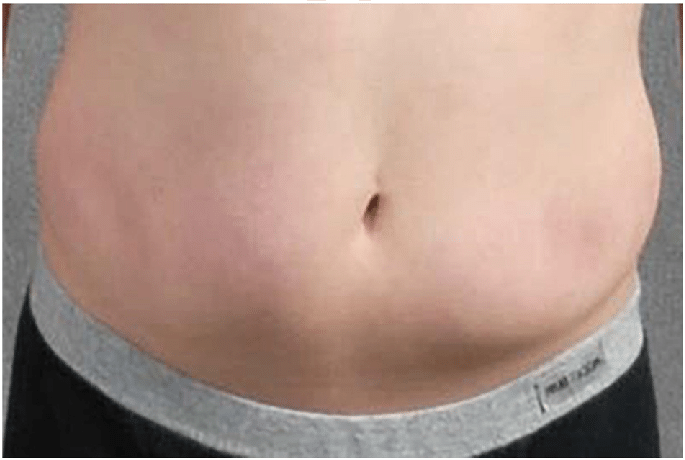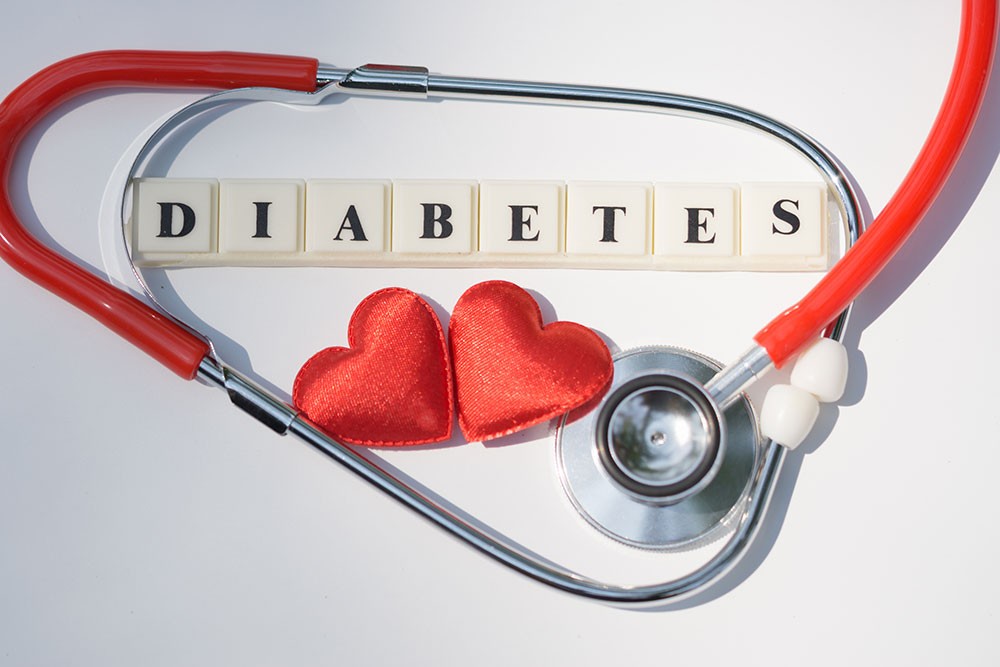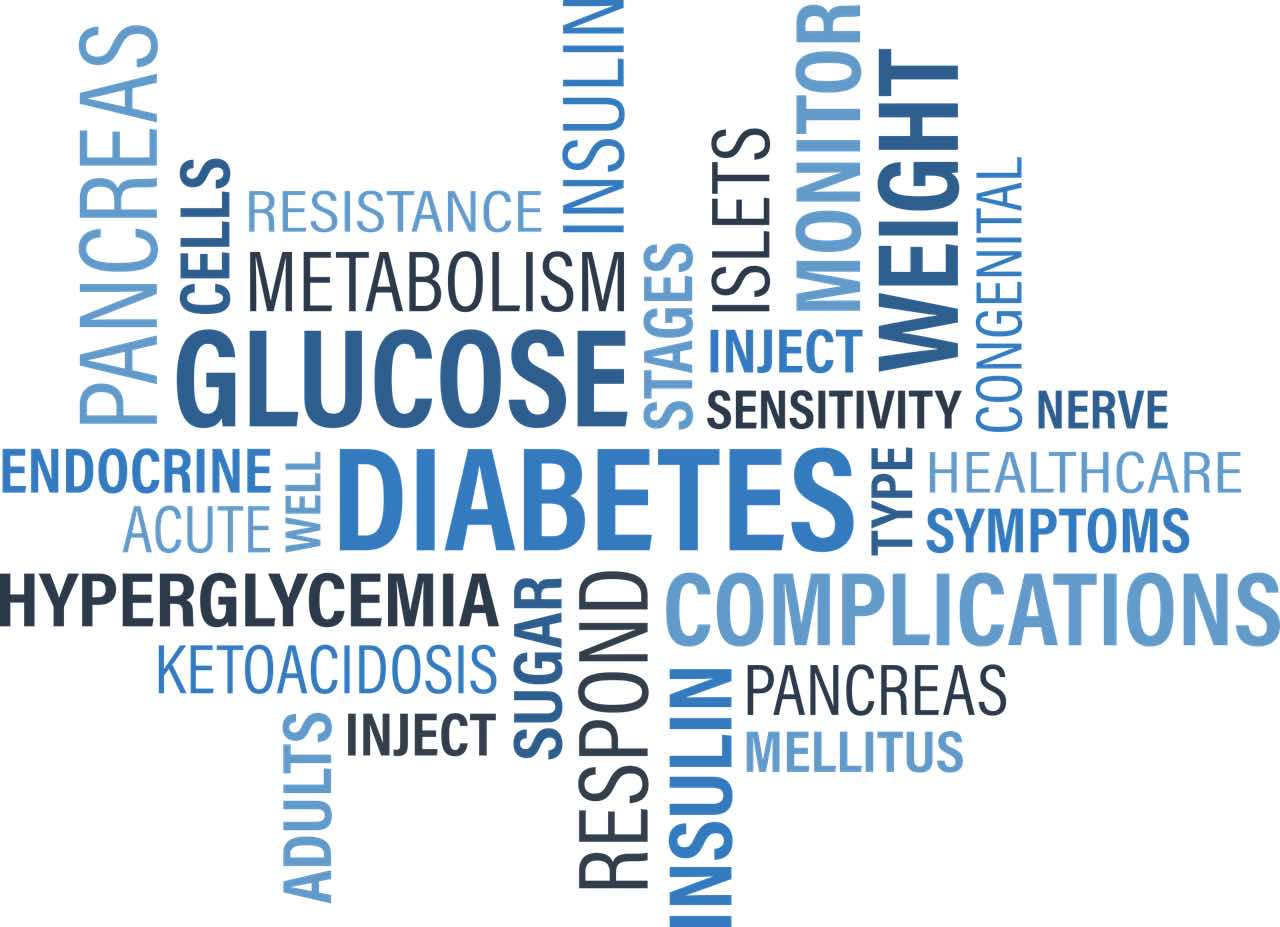Last updated on July 28th, 2023
Are you on insulin therapy and injecting insulin? In such a case, you must inspect regularly the site of injections. In some cases at the site of insulin injections fat starts to accumulate and it may form a thickened scar or lymph-like structure. Lipohypertrophy is this abnormal growth of fat under the skin at the insulin injection site. It results in a delay in the absorption of insulin within the body. It can lead to fluctuating blood glucose levels despite being on insulin therapy.
This article guides you on Lipohypertrophy and the ways to overcome its risk while being diabetic.

What is Lipohypertrophy?
Lipohypertophy is the accumulation of visceral fat at the insulin injection site. Patients on insulin injections may notice thickening of the tissue at the injection site. This slowly can look like a lump of thick tissues and are benign.
People undertaking subcutaneous injections like insulin therapy often have such thickening of tissues and accumulation of fat at the injection site. It is more common in people with type-1 and type-2 diabetes. 62% of diabetic patients suffer from Lipohypertrophy while on insulin injections.
Also Read: Can Quitting Alcohol Reverses Diabetes?


Symptoms & Causes of Lipohypertrophy
Symptoms
The figure below is an image of a patient with Lipohypertrophy. Notice the lump or swelling-like structure at the umbilicus region.
(Figure 1 takes only the first image (a))
Lipohypertrophy symptoms thus look like the following:
- Fat hard swelling at the site of injection
- Raised skin area with a feeling of no pain
- Swelling area of around 1 inch in diameter. The size may vary from person to person.
- Inflammation around the area on the skin.
- Warmer in sensation
- Having itching sometimes
- Some may experience bruises or even light bleeding.
If you experience any of these above symptoms at the site of subcutaneous injection, consult the doctor immediately.
Summary
Lipohypertrophy is swelling near the insulin injection site. It looks like thickened tissue, lump-like hard area of around 1 inch in diameter.
Causes of Lipohypertrophy
Taking multiple subcutaneous injections at one site is the leading cause of Lipohypertrophy. It is more common in people with type-1 diabetes and those who require multiple injections for staying healthy.
Why Worry with Lipohypertrophy?
Lipohypertophy affects the proper insulin absorption in diabetic patients. The insulin absorption becomes irregular due to swelling at the injection site.
Numerous studies on diabetic patients revealed that despite administrating insulin injections for the past 1 to 3 years, these patients reported fluctuating levels of blood glucose, especially in the past 6 months. The patients also faced the issues of unpredictable hypoglycemia despite being a proper diet plan and insulin therapy [2; 5].
All tests of such patients like thyroid, kidney function tests were normal [2]. Lipohypertrophy symptoms were visible in these patients. On the examination of the injection site, the symptoms were clear. Thus Lipohypertrophy was impacting diabetes management by affecting insulin absorption [2].
After diagnosis, the injection sites were rotated and the insulin dosage was adjusted. The glucose levels improved within 3 months of injection site rotation [2]. Additionally, diabetes control was effective.
Henceforth, Lipohypertrophy impacts insulin absorption [1]. Due to which the insulin impact in the body reduces resulting in unpredictable hypoglycemia and fluctuating glucose levels [1].
Summary
Lipohypertrophy causes an irregular and uneven insulin absorption. This in turn causes fluctuating blood glucose levels and improper diabetes management.
Risk Factors & Prevention
Risk Factors
Factors that increase the likelihood of Lipohypertrophy are as follows:
- Administrating multiple injections at the same site.
- Reusing the same needle for injection. In research, it is found that due to reused needles 46% of patients suffer from lipohypertrophy [3].
- Age of the patients and high body mass index. Due to aging, the skin structural changes increase the risk of the formation of lumps.
- Improper injection administration. Failure of proper evaluation of the injection site and thus injecting improperly can cause swelling at the injection site.
- Those on long-acting insulin therapy [1].
- People with poor glycaemic control and improper diabetes management [5].
- Type -1 diabetes patients are at more risk of Lipohypertrophy due to more dependency on insulin injections [3].
Also Read: Tab Glycomet to Reduce Sugar Level
Prevention and Safety guidelines
Prevention from Lipohypertrophy is a collective effort of the health practitioner as well as patients. Following proper safety guidelines can help in preventing Lipohypertrophy in the best possible way.
Safety Guidelines for health practitioners:
- Site Examination: A health practitioner should examine the injection site every time before injecting insulin. Proper palpation and inspection of the area should be done before injecting. The injection sites for insulin are the upper arm area, the lower abdomen area, thigh and upper buttock area [4].
- Rotating the site: If the patient is reporting fluctuating blood glucose levels it is advised to rotate the injection site rather than adjusting insulin dosage [4].
- Awareness: Patients may insist on injecting at the same sight as it hurts the less due to the scar tissue in the area. Thus, the health expert should talk to the patients and make them understand the risks related to Lipohypertrophy.
- Needles: Never reuse needles. Researches have proven to use short needles for insulin injection.
Also Read: Diabetic Diet Plan
Safety Guidelines for patients:
- Accurate information: Provide proper information on fluctuating blood glucose levels, hypoglycemia episodes, age information, and other health-related issues to the health practitioner.
- Self-administration: If on self-administration of the insulin injection, rotate the injection site. Try to visit the health expert if you find any fluctuating blood glucose levels despite being insulin therapy.
- No needles reuse: You should avoid reusing any needles for insulin injection or any subcutaneous injection. Try to use only short needles.
- Check Symptom: You should be aware of the Lipohypertrophy symptoms and risks. Inspect the injection site regularly. If you notice any of its symptoms like swelling, thickening of tissues, lumps, itching, bruising consult a health expert immediately.
Summary
Regular inspection of the injection site, rotating site, and avoiding reusing of needles shall help in preventing the risks of Lipohypertrophy.
Diagnosis & Treatment of Lipohypertrophy
Diagnosis
- Lumps are visible: Lipohypertrophy diagnosis is done by examining the presence of its symptoms. Henceforth, the presence of lumps, scars or thickened tissue areas may indicate Lipohypertrophy. Health experts after examination of the injection site may notice the presence of lipohypertrophy easily if all the symptoms are visible.
- When lumps are not visible: But in some cases, the lipohypertrophy may not be visible and thus may require further examination. This includes palpations and ultrasonography before accurate diagnosis.
Treatment
Lipohypertrophy treatment in general includes:
- Rotation of the injection sites away from the current area.
- Liposuction: if the lipohypertrophy is severe the doctors may carry out a small surgery of Liposuction. During the surgery, the fat from the skin is removed. It thus reduces the lump size.
- Topical steroids: in some cases, topical steroids are prescribed.
Bottom line
Finally, diabetes management includes diabetes skin care. Lipohypertrophy is thickened lumps at the insulin injection site. These lumps are not malignant. But these may interfere with insulin absorption and make the diabetes management treatment ineffective.
Therefore, awareness among the patients regarding Lipohypertrophy and its symptoms is highly essential. Proper prevention is the key to avoiding the negative effects of Lipohypertrophy. Rotation of injection sites and avoiding reuse of needles can prevent Lipohypertrophy.
Also Read: What level of blood sugar is dangerous?
FAQs:
To avoid Lipohypertrophy how frequently the rotation of the injection site should be done?
Ideally according to health guidelines it is preferable to have 6–10 placements at a single injection site [4]. The health expert should examine the injection site on regular basis to ensure that the site is perfect for injection.
Are the Lipohypertrophy lumps painful?
Generally these Lipohypertrophy lumps are not painful. If you feel pain, consult the doctor immediately.
Are there any cancerous risks related to the lumps of Lipohypertrophy?
The lumps of Lipohypertrophy are benign and thus not cancerous.
References:
- Radermecker RP, Piérard GE, Scheen AJ. Lipodystrophy reactions to insulin: Effects of continuous insulin infusion and new insulin analogs. Am J Clin Dermatol. 2007;8:21–8. [PubMed] [Google Scholar]
- Mokta, J. K., Mokta, K. K., & Panda, P. (2013). Insulin lipodystrophy and lipohypertrophy. Indian journal of endocrinology and metabolism, 17(4), 773–774. https://doi.org/10.4103/2230-8210.113788
- Melanie Teslik (2020), Lipohypertrophy: A Forgotten Problem. Retrieved from: https://www.diabeteseducator.org/news/perspectives/aade-blog-details/adces-perspectives-on-diabetes-care/2020/01/28/lipohypertrophy-a-forgotten-problem
- Medtronic Diabetes: Tape Tips and Site Management. https://www.medtronicdiabetes.com/sites/default/files/library/download-library/workbooks/Tape%20Tips%20and%20Site%20Management.pdf (accessed January 17, 2018). Google ScholarGo back to content
- Chowdhury TA, Escudier V. Poor glycaemic control caused by insulin-induced lipohypertrophy. BMJ. 2003;327:383–4. [PMC free article] [PubMed] [Google Scholar]
Last Updated on by Dr. Damanjit Duggal
Disclaimer
This site provides educational content; however, it is not a substitute for professional medical guidance. Readers should consult their healthcare professional for personalised guidance. We work hard to provide accurate and helpful information. Your well-being is important to us, and we value your feedback. To learn more, visit our editorial policy page for details on our content guidelines and the content creation process.

 English
English











